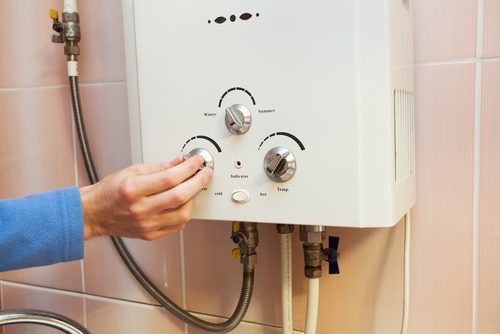The content underneath relating to Tips on Maintaining a Water Heater is amazingly fascinating. Don't skip it.

Hot water is essential for day-to-day comfort, whether it's for a revitalizing shower or washing recipes. To ensure your warm water system runs effectively and lasts much longer, regular upkeep is key. This write-up offers sensible suggestions and understandings on exactly how to preserve your home's warm water system to avoid disturbances and costly repair services.
Introduction
Preserving your home's hot water system could seem complicated, but with a few straightforward steps, you can ensure it operates efficiently for many years to come. This guide covers whatever from recognizing your hot water system to DIY maintenance ideas and knowing when to contact specialist assistance.
Value of Preserving Your Warm Water System
Normal upkeep not only extends the life expectancy of your warm water system yet likewise guarantees it runs successfully. Neglecting maintenance can result in reduced performance, higher energy expenses, and even early failing of the system.
Indicators Your Warm Water System Demands Maintenance
Understanding when your hot water system needs interest can avoid major problems. Watch out for signs such as inconsistent water temperature, strange noises from the heater, or rusty water.
Understanding Your Hot Water System
Before diving into maintenance tasks, it's useful to comprehend the fundamental elements of your hot water system. Normally, this consists of the hot water heater itself, pipes, anode rods, and temperature controls.
Monthly Maintenance Tasks
Normal monthly checks can help catch small concerns prior to they intensify.
Flushing the Water Heater
Flushing your water heater removes debris build-up, enhancing effectiveness and extending its life.
Checking and Changing Anode Rods
Anode rods avoid corrosion inside the tank. Inspecting and replacing them when broken is essential.
Checking and Readjusting Temperature Level Settings
Adjusting the temperature level settings ensures optimal efficiency and security.
DIY Tips for Maintenance
You can execute numerous maintenance jobs on your own to keep your hot water system in top problem.
Looking for Leakages
Consistently check pipes and connections for leakages, as these can bring about water damages and higher expenses.
Examining Stress Relief Valves
Examining the stress relief valve guarantees it works properly and stops extreme pressure buildup.
Protecting Pipelines
Protecting hot water pipelines lowers warmth loss and can conserve energy.
When to Call a Professional
While do it yourself maintenance is valuable, some problems call for expert proficiency.
Facility Problems Calling For Expert Aid
Examples consist of major leakages, electrical issues, or if your water heater is constantly underperforming.
Routine Professional Maintenance Conveniences
Expert upkeep can include complete evaluations, tune-ups, and making certain conformity with safety requirements.
Verdict
Regular upkeep of your home's warm water system is important for performance, durability, and price savings. By complying with these pointers and knowing when to seek specialist help, you can make certain a reputable supply of warm water without unexpected disruptions.
How to Maintain an Instant Hot Water Heater
Before tinkering with your hot water heater, make sure that it’s not powered on. You also have to turn off the main circuit breaker and shut off the main gas line to prevent accidents. Also turn off the water valves connected to your unit to prevent water from flowing into and out of the appliance. 2. When you’re done, you have to detach the purge valves’ caps. These look like the letter “T” and are situated on either side of the water valves. Doing so will release any pressure that has accumulated inside the valves while at the same time avoid hot water from shooting out and burning your skin. 3. When the purge valves’ caps are removed, you have to connect your hosing lines to the valves. Your unit should have come with three hoses but if it didn’t, you can purchase these things from any hardware or home repair shops. You can also get them from retail stores that sell water heating systems. Read the user’s manual and follow it to complete this task properly. When the hosing lines are connected, open the purge port’s valves. 4. You should never use harsh chemical cleaners or solutions when cleaning your unit. Make use of white vinegar instead. It should be undiluted and you’ll probably use about 2 gallons. 5. Now flush your water heater. This task should probably take about 40 minutes. We can’t give you specific directions for this because the procedure is carried out depending on the type, model and brand of your heater. With that being said, refer to the user’s manual. 6. When you’re done draining the unit, you have to turn off the purge port valves again. Remove the hosing lines that you earlier installed on each of the water valves. Put the valve caps (purge port) back in their respective places and be very careful so as not to damage the rubber discs that are found inside these caps. 7. Now that everything’s back in place, check your user’s manual again to find out how to reactivate your water heating system. 8. Once it is working, turn one of your hot water faucets on just to let air pass through the heater’s water supply pipes. Leave the tap on until water flows smoothly out of it. https://www.orrplumbing.com/blog/2014/september/how-to-maintain-an-instant-hot-water-heater/

We hope you enjoyed our section on How to Maintain Your Water Heater & Prolong its Life. Thanks a ton for spending some time to browse our blog post. Sharing is nice. You just don't know, you might be helping someone out. Bless you for being here. Please come by our site back soon.
Hire A Pro